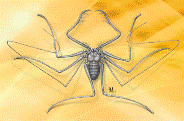Papers in the Biological Sciences

Eileen Hebets Publications
Document Type
Article
Date of this Version
August 2007
Abstract
The production of multimodal signals during animal displays is extremely common, and the function of such complex signaling has received much attention. Currently, the most frequently explored hypotheses regarding the evolution and function of complex signaling focus on the signal and/or signaler, or the signaling environment, while much less attention has been placed on the receivers. However, recent studies using vertebrates suggest that receiver psychology (e.g. learning and memory) may play a large role in the evolution of complex signaling. To date, the influence of multimodal cues on receiver learning and/or memory has not been studied in invertebrates. Here, we test the hypothesis that the presence of a seismic (vibratory) stimulus improves color discrimination learning in the jumping spider Habronattus dossenus. Using a heat-aversion learning experiment, we found evidence for a cross-modal effect on color learning. Over a series of training trials, individuals exposed to a seismic stimulus jumped onto the heated color less frequently and remained there for less time than did individuals not exposed to a seismic stimulus. In addition, in a final no-heat test trial, individuals from the seismic-present treatment were more likely to avoid the previously heated color than were individuals from the seismic-absent treatment. This is the first study to demonstrate a cross-modal influence on learning in an invertebrate.


Comments
Published in The Journal of Experimental Biology 210, 3689-3695. Copyright © The Company of Biologists 2007. Used by permission.